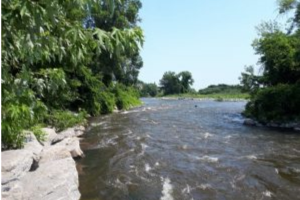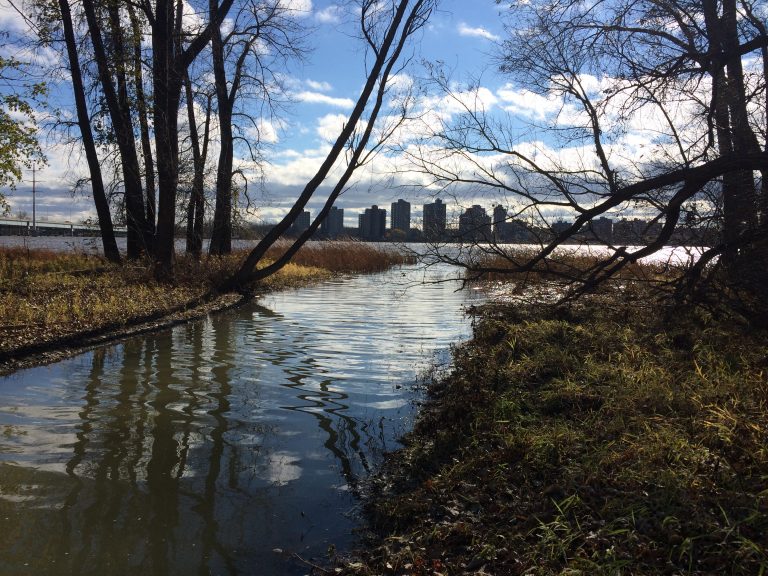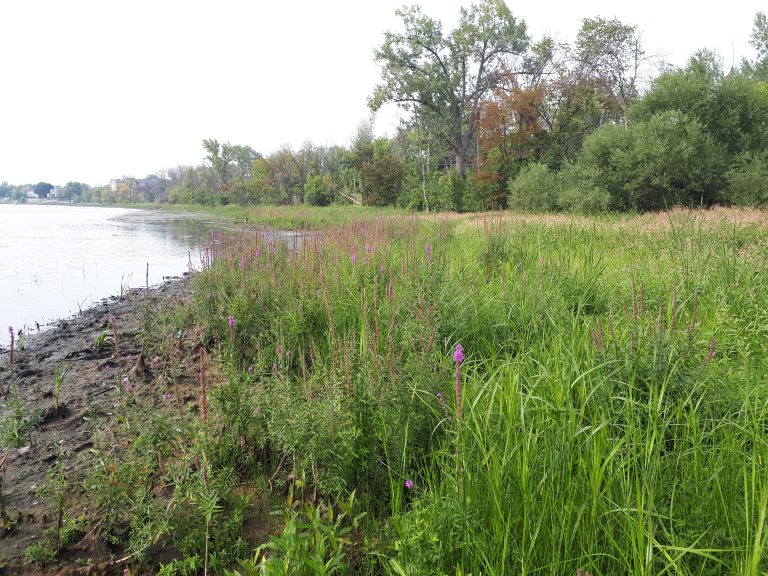
Streams runon about 250 kilometers of the surface of Jesus island. Since 2013, CRE de Laval surveys the main streams through the Urban streams of Laval project.
The Des Prairies river flows south of Laval and north of Montreal. The river begins, just like the Mille-Îles river, at the eastern end of the Deux-Montagnes lake and ends in the St. Lawrence River.

View from Montreal-North
During the summer, the highest flow rate (1510 cube meters per second) (1) is five times faster than in Mille-Îles river (357 cube meters per second) (2). The waters are therefore more oxygenated but the high flow prevents the establishment of most aquatic plants. Only 19% of its area is vegetated, compared to 53% in the Mille-Îles river (3). Des Prairies river is therefore not as productive in terms of wildlife communities. However, fast flow create suitable spawning areas for many fish species present in the river.
Des Prairies river is therefore an important wildlife habitat. However, the shores are greatly artificialized by low walls. Since 1995, when low walls require major repairs, they must be replaced by naturalized river banks (4). The bank slopes are also steeper compared to Mille-Îles river, which limits outwash space during flooding events. Most riverside lands are therefore not located in the floodplain.

Nearshore marshes such as this one can be found downstream of the generating station of Des Prairies river.
Boaters greatly enjoy the Des Prairies river. High currents can however be dangerous, especially the rapids, so swimming is not recommended nor common. The river is separated by a hydroelectric dam over which stands the Rivière-des-Prairies plant, at the height of Pie-IX bridge.
In 2004, CRE de Laval collaborated with the City of Laval and the Quebec government to acquire the Mitan archipelago which includes 5 islands. The total surface area is 68 hectares. It is located on the eastern side of the river, near the estuary. As a municipal natural reserve, the Mitan archipelago is an important habitat for wildlife and many plant species and it is home of a population of green dragons (Arisaema dracontium), a threatened species in Quebec. The conservation status of Mitan archipelago guarantees a perpetual protection.
Sources (in French)
5 Réseau de milieux naturels protégés – Répertoire ARCGIS



